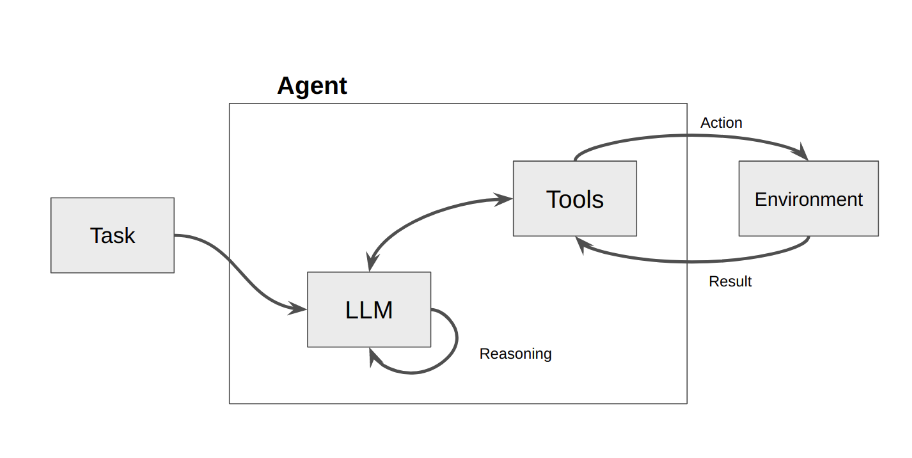Tool Modules
In this section, we'll cover:
- 🔧 What is a Tool Module?
- 📝 Tool Configurations
- 🐋 Tool Deployments
- 🚀 Running a Tool Module
- 🤖 Running an Agent that uses a Tool
🔧 What is a Tool Module?
Tool modules extend agent capabilities by providing reusable functions that can be shared across different agents. Some examples of tool modules include:
- Web Search: Access and retrieve information from the internet
- Database Query: Interact with various database systems
- File Search: Find and process files efficiently
- Custom Functions: Implement specialized capabilities

📝 Tool Configurations
You can configure a tool module by specifying:
- An LLM Configuration - The language model that the tool uses to generate responses
The configuration of a tool module can be specified using the ToolConfig class:
#naptha_sdk/schemas.py
class ToolConfig(BaseModel):
config_name: Optional[str] = None
llm_config: Optional[LLMConfig] = None
🚀 Tool Deployments
Tool deployments allow you to specify the node that the tool will run on, and the module that the tool will use. The configuration of a tool deployment can be specified using the ToolDeployment class:
#naptha_sdk/schemas.py
class ToolDeployment(BaseModel):
node: Union[NodeConfig, NodeConfigUser, Dict]
name: Optional[str] = None
module: Optional[Dict] = None
config: Optional[ToolConfig] = None
data_generation_config: Optional[DataGenerationConfig] = None
🛠️ Running a Tool Module
Prerequisites
Install the Naptha SDK using the instructions here.
Example
The Generate Image Tool is a simple example of a Tool module that will be used in the examples below. It is intended to demonstrate how agents can interact with a Tool module that allows them to generate images.
You can deploy the tool (without running) using:
# usage: naptha create <tool_name>
naptha create tool:generate_image_tool
Run the tool:
# usage: naptha run <tool_name> -p "<tool args>"
naptha run tool:generate_image_tool -p "tool_name='generate_image_tool' tool_input_data='A beautiful image of a cat'"
The configuration of a tool module is specified in the deployment.json file in the configs folder of the module.
# ToolConfig in deployment.json file
[
{
...
"config": {
"config_name": "tool_config",
"llm_config": {"config_name": "model_1"},
}
}
]
Details on how to store secrets such as API keys securely on the Naptha Hub coming soon.
🤖 Running an Agent that uses a Tool
The Generate Image Agent is an example of an Agent module that interacts with the Generate Image Tool. You can run the agent module using:
# usage: naptha run agent:generate_image_agent -p "<agent args>" --tool_nodes "<node_ips>"
naptha run agent:generate_image_agent -p "tool_name='generate_image_tool' tool_input_data='A beautiful image of a cat'" --tool_nodes "node.naptha.ai"
The name of the tool subdeployment that the agent uses is specified in the configs/deployment.json, and the full details of that tool subdeployment are loaded from the deployment with the same name in the configs/tool_deployments.json file.
To use a tool as a subdeployment for another module, you can create a tool_deployments.json file and specify use the tool_deployments field in the deployment.json file:
# AgentDeployment in deployment.json file
[
{
"node": {"name": "node.naptha.ai"},
"module": {"name": "generate_image_agent"},
"config": ...,
"tool_deployments": [{"name": "tool_deployment_1"}],
...
}
]
# ToolDeployment in tool_deployments.json file
[
{
"name": "tool_deployment_1",
"module": {"name": "generate_image_tool"},
"node": {"ip": "node.naptha.ai"},
"config": {
"config_name": "tool_config_1",
"llm_config": {"config_name": "model_1"}
},
}
]
There is a GenerateImageAgent class in the run.py file, which imports the Tool class and calls the Tool.run method:
from naptha_sdk.schemas import AgentDeployment, AgentRunInput, ToolRunInput
from naptha_sdk.modules.tool import Tool
from naptha_sdk.user import sign_consumer_id
class GenerateImageAgent:
async def create(self, deployment: AgentDeployment, *args, **kwargs):
self.deployment = deployment
self.tool = Tool()
tool_deployment = await self.tool.create(deployment=deployment.tool_deployments[0])
self.system_prompt = SystemPromptSchema(role=self.deployment.config.system_prompt["role"])
async def run(self, module_run: AgentRunInput, *args, **kwargs):
tool_run_input = ToolRunInput(
consumer_id=module_run.consumer_id,
inputs=module_run.inputs,
deployment=self.deployment.tool_deployments[0],
signature=sign_consumer_id(module_run.consumer_id, os.getenv("PRIVATE_KEY_FULL_PATH"))
)
tool_response = await self.tool.run(tool_run_input)
return tool_response.results
Under the hood, Tool.run makes a call to the worker node via API, which executes the tool module. This makes it possible for agents and tools built using different frameworks or languages to interoperate.